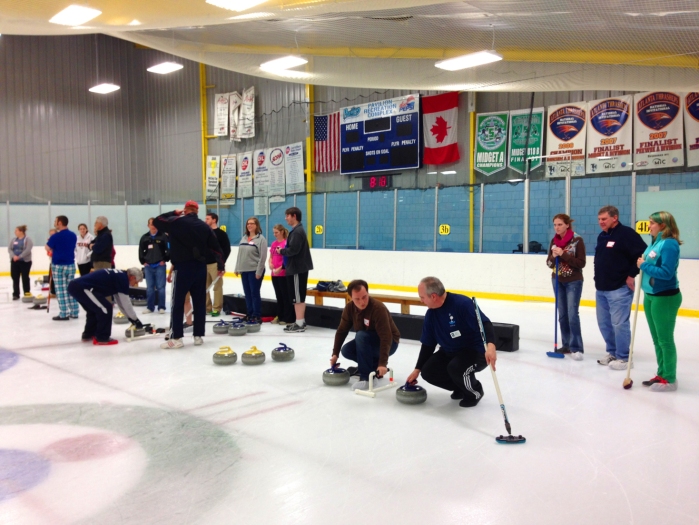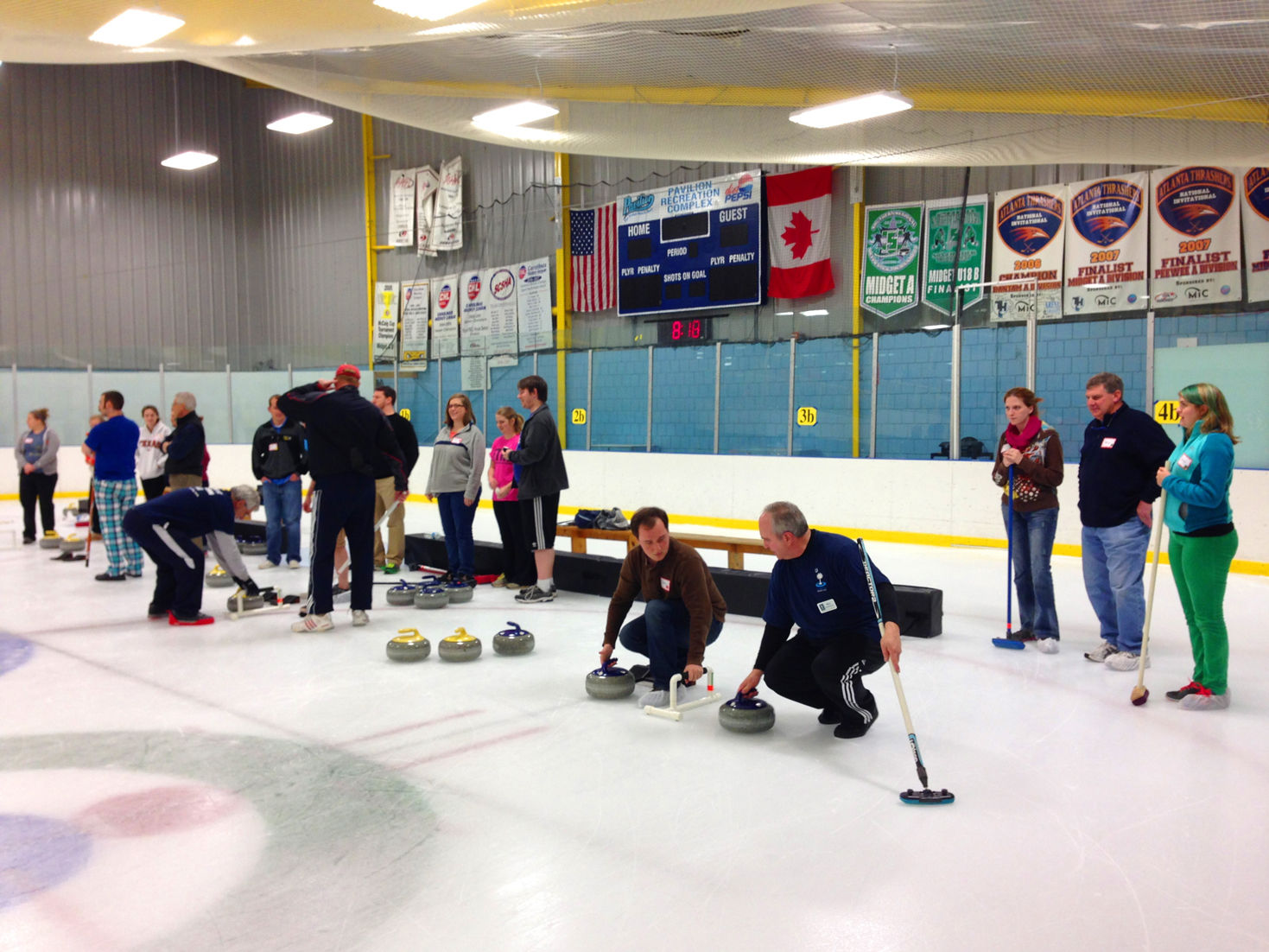
Photo courtesy of Dante Durrman
Curling is probably the most confounding sport of the Winter Olympics and is often referred to as “chess on ice.” The sport is played on what’s known as pebbled ice, which is sprayed with water before the game in order to increase friction across the surface of the playing field. Each curling team consists of four players whose goal is to get their stones closer than the opposing team's to the center or "home" of a giant bull's eye near the end of the rink. Each player throws two stones each round, with the "skip" or team captain throwing the last stones of the round.
The skip's main job is to figure out the best strategy to place his or her team's stones nearest the bull's eye by the end of the game. This means that the stones might be aimed to either block the other team from getting near the home or by knocking the other team's stones out of the way so that they are farther from home. This is where curling and sweeping come in.
The thrower aims the handle of the stone in the direction that the skip decides they want it to curl. The sweepers' jobs are to reduce the friction between the stone and its aimed location by sweeping vigorously on the ice in front of the stone, thus melting the ice and allowing the stone to glide either faster or slower depending on where they want it to end up.
At the end of the round, the two teams will have thrown 16 stones with points awarded to the team with the closest stone. If one team has multiple stones closer to home than its opponent, that team will gain multiple points. Each game consists of 10 rounds, and the team with the most points wins. As anyone who watched curling during the Olympics can see, the game is not about physical strength but of mental agility and strong strategic planning.
Last Tuesday night, Feb. 18, I decided to take up the Palmetto Curling Club's offer of free curling lessons down at the Pavilion Recreational Complex in Greenville. I had no clue what to expect. I had heard of curling (somewhat) thanks to the recent Winter Olympics, but I had not bothered to follow the sport closely. So I went with an open mind, though I was somewhat skeptical of this so-called "sport.” After arriving, I was put into a group of about 40 others and taken to a balcony overlooking the ice rink where we watched men spray the ice to "pebble it.”
"They pebble it with the water so our rocks have something to grip onto,” said Matthew Jones, one of the instructions. “No friction and we can't direct the speed of the stone.”
Anne Wiggins, a 2004 Winter Olympics bronze medalist explained the history of the sport at the lesson.
"Curling was created in 16th century Scotland, where it became a popular pastime for ‘fat smokers.’ It only later came to the Americas in the 1800s, carried on the backs of Scottish immigrants. The first world curling championship was held in Edinburgh, Scotland, in 1959, but curling was not established as an official Winter Olympic sport until 1998,” Wiggins said.
It turns out that curlers don't wear ice skates, so instead, our group walked out in our rubber-soled tennis shoes and sneakers. The club members had special curling shoes, which had thick rubber soles on one shoe (their dominant foot) and were completely smooth on the other sole. This smooth sole is used for gliding across the ice when they "throw" the stone. However, as I found out, throwing isn't exactly throwing in curling.
I took a grip of a 42-pound stone in my right hand. Jones gave instructions.
“You push forward a bit with your left leg and the stone, then you swing back, lift your bottom in the air and then push off. Let go of the stone when you feel like you've started to slow down in your glide."
I reared up and threw myself off the block. It was exhilarating! At least until I somehow slipped and landed flat on my face.
Luckily, the second time, I managed to send the rock a few feet. Too bad the venue for a curling game is 146 feet long.
The goal of a sweeper is not to sweep too wide, only a few inches across, just in front of the rock. The true object of the sweeper is to make sure to bear down hard when they sweep to make the ice before the stone as smooth as possible so the stone glides faster and farther.
My knees were bent, my broom at the ready, and Jones released the stone. I think I got two good sweeps in before the boulder went flying past me. I never thought I would be able to say I had to run after a rock, but alas, I did.
Okay, so now I know that I am possibly the worst curler in the history of the world, but I also have a new respect for the art of curling. Sure, it's a weird sport, but I would highly recommend it to anyone interested and suggest that they head on out to the Pavilion Complex for some good, chilly fun. The Palmetto Club is putting on two more free lessons: Tuesday, Feb. 25, from 7:30–8:30 p.m. and Saturday, Mar. 8, from 5–6 p.m.
